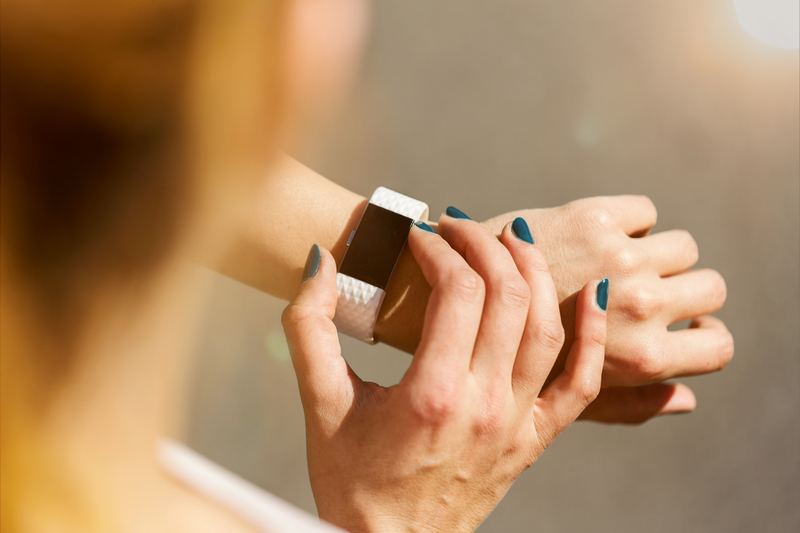Creating Movement Moments to Build an Exercise Habit

Creating a lifestyle where exercise is a habit is easy when you build movement moments into your daily activities.
What Is a Movement Moment?
You may have all the best intentions in the world, but how easy is it really to fit exercise into your day? It’s one of those things that commonly either falls by the wayside or… you can simply add movement moments to your day.
What is a movement moment? A movement moment is extra activity that you program into your day to boost your fitness level.
How Much Movement Is Enough?
You move around during the day and probably get some activity, but how do you know if what you’re doing is enough? The Physical Activity Guidelines for Americans recommends that healthy adults engage in a minimum of 150 minutes of moderate physical aerobic type activity a week in addition to two or more days per week of strength training exercises.
But if you’re not on a regular gym schedule, how can you fit this much movement into your day? Add movement moments to your routine!
According to the Centers for Disease Control and Prevention (CDC), only about 20% of adults come close to the recommended federal guidelines for aerobic activity and resistance training. And, the older the adult, the less active, statistics say. But that doesn’t have to be your story. Adding movement moments into your day to create an exercise habit is easy.
What Does It Take to Build an Exercise Habit?
Building new habits is not something that comes easily. It must be planned and executed on a consistent basis. Having a strategy to help you incorporate exercise into your day is the best way to add movement moments to your daily routine.
- 1. Decide what you want—if you want to become more active, it will take some concerted effort. Figure out why you want to be more fit. Do you want better health? Maybe you want to set an example for your children. Or, perhaps you have a special event coming up, and you’d like to be healthier and tone up. Whatever the motivation, keep it front and center. This will help you make good decisions based on what you really, really want, long-term.

2. Identify and remove barriers to your fitness—figure out what’s blocking you. There are a lot of things that can get in the way of your fitness success. Whether it’s time constraints, costs, pain, or boredom, it’s important to find out what’s stopping you… and then find ways to change that so it fits your schedule, is cost-effective (or even free), slowly builds up so it feels good, and is something you enjoy doing. There are so many different ways to move your body—many of them completely free and fun, such as a simple walk in the park or trail hike, playing games outside, yoga, and more.

3. Change your wording—instead of calling it “exercise,” it might be helpful to change your language, so you don’t have negative connotations when thinking about moving. If you’ve struggled with the “fun” factor and haven’t enjoyed exercise in the past, try rewording it as other, more enjoyable activities. It’s easier to stick with something when you like it. Try renaming your exercise sessions to things like “meeting with friends for class,” dancing, a walk in the park, a jaunt around the neighborhood, seeing the sights from the top of the mountain, and playing in the yard with the kids. There are a lot of ways that activity can be fun. Go with these!

Build Movement Moments into Your Day
So, you’re ready to get more active. Now what do you do? You don’t need to make huge, overwhelming changes. Just start with small little bits of added movement throughout your day.
Identify spots where you can increase activity:
- Take the stairs—a few flights of stairs here and there can bring big benefits.

Walk in place—if you’re on the phone or watching television, why not walk in place or pace?
Do mini workouts—stop what you’re doing and do ten body squats on the hour, or do ten jumping jacks; just do something to get the blood flowing.

Park far away—the extra steps will easily add up, so you won’t even notice it.
Set a timer on your watch—get up and move around when it goes off.

Stand up often—if you work at a desk, sitting all day, then make sure you get up as often as possible or invest in a standing desk.
Take a five-minute walk—this can boost your mood and your energy levels.
When tired, do a few stretches—try some new yoga positions or take five minutes to stretch it out.

Walk the dog—taking your furry friends around the block helps, too!
Make Your Movement Moments Stick
Now that you’ve built your movement moments into your daily repertoire, what can you do to keep it all going? Try setting up rewards for yourself. First, notice and feel how great the activity is. Are you breathing fresh air, basking in sunshine, or enjoying laughs and smiles with friends while getting in movement? How does it make your body feel? How is your mood? Researchers say that even small increases in physical activity can help alleviate self-defeating attitudes, lift depression, reduce stress, and improve overall health. Not to mention, toning up and getting stronger is also a nice bonus.
Try looking at movement as a privilege… because it is. Cherish those moments and watch your health improve effortlessly.



 7 Signs Your Body is Seriously Low on Collagen (not just wrinkles)
7 Signs Your Body is Seriously Low on Collagen (not just wrinkles) Health Expert: "Turmeric Doesn't Work (unless...)"
Health Expert: "Turmeric Doesn't Work (unless...)" 3 Warning Signs Your Probiotic Supplement is a Total Waste
3 Warning Signs Your Probiotic Supplement is a Total Waste

